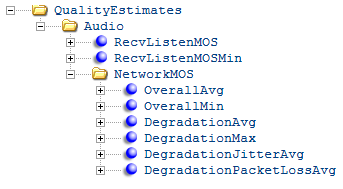Being a UC Superhero with Lync QoE Superpowers
Editor’s note: In partnership with Microsoft Press, MVPs have been contributing to an ongoing guest series on their official team blog. Today’s article is from Lync MVPs Andrew Morpeth and Curtis Johnstone which is the 49th in the series.
Microsoft Lync, by virtue of being a Unified Communications solution, relies on an ecosystem of infrastructure to ensure a good user experience for rich real-time communication features such as voice and video. A simple Lync audio call for example is dependent on the network, end-user devices, and many other components that can jeopardize quality.
Trying to pinpoint the underlying cause of poor user experiences in this ecosystem is very challenging; so much so, a new set of superpowers are required. This article introduces you to the Lync Quality of Experience (QoE) data, and gets you started on learning how to leverage it to determine the causes of poor Lync media calls so you can take action and be a true UC superhero.
How can Lync QoE data help you?
Unlike traditional phone systems where a problem is typically isolated to a single system, the most common Lync dependencies that need to be considered when troubleshooting quality issues are:
- Network Connectivity (including the status of routers and switches)
- Lync client operating system hardware and software
- Lync server operating system hardware and software
- Endpoint devices
- Voice Gateway’s (to an IP-PBX or PSTN breakout)
- Internet Telephony Service Provider’s (ITSP)
Fortunately Lync has some in-depth reporting capability built-in out of the box (provided you have decided to install the Lync monitoring service). Endpoints involved in a conversation (this includes not only clients, but phones, servers and gateways) will report QoE data back to the monitoring server in as part of the SIP protocol (specifically a SIP SERVICE request) at the end of the call. This is very powerful because it gives Administrators the ability to view quality metrics about a particular Lync conversation from multiple vantage points without the need for complex end to end monitoring or routers, switches, etc.
A sample of the quality data collected by the Lync client and sent back to the Lync server for storage in the Lync QoE database is shown here in Figure A:
Figure A - Example of QoE data stored as XML that the client collects and sends back to the server |
Note: if you did want more in-depth end-to-end monitoring (e.g. more network related metrics and metrics for the portion of a call outside of the Lync environment) the new Software-Defined Networking (SDN) API opens up even greater possibilities to monitoring solution vendors, allowing network monitoring information to be combined with the Lync QoE data.
What do all those Numbers Mean?
In order to truly get the most out of QoE metrics you need to understand what the metrics are, and what constitutes a good and bad Lync experience.
The QoE data can be viewed in several ways – directly in the database or in a Lync Reporting solution. Lync ships with a set of default reports which span usage and quality data. These are referred to as the Lync Monitoring reports and are part of the Monitoring service installation. These reports are not integrated with Active Directory and contain only the data that exists in the QoE database at the time (which depends on the QoE retention settings) but are still valuable with some knowledge and a little digging. Continue reading full article here
About the authors
Curtis Johnstone is a Senior Unified Communication (UC) product architect with Dell Software and a Microsoft Lync MVP. He has more than 15 years of Microsoft enterprise deployment and application development with Microsoft Lync, Exchange, and Office 365. He leverages his UC domain expertise in the Windows Server Management business unit at Dell to design, develop, and deliver world-classmanagement applications for Microsoft Lync, Exchange, and Office 365. Curtis is also the founder and lead contributor of the popular Microsoft Lync blog www.insidelync.com. Follow him on Twitter
Andrew Morpeth is a Unified Communications (UC) consultant and Lync MVP. Andrew has been working with Microsoft technologies for more than 10 years, and currently works for one of New Zealand's leading Lync integrators, Lexel Systems. Andrew is also a PowerShell lover and UC blogger at https://www.lync.geek.nz/. Follow him on Twitter
About MVP Mondays
The MVP Monday Series is created by Melissa Travers. In this series we work to provide readers with a guest post from an MVP every Monday. Melissa is a Community Program Manager, formerly known as MVP Lead, for Messaging and Collaboration (Exchange, Lync, Office 365 and SharePoint) and Microsoft Dynamics in the US. She began her career at Microsoft as an Exchange Support Engineer and has been working with the technical community in some capacity for almost a decade. In her spare time she enjoys going to the gym, shopping for handbags, watching period and fantasy dramas, and spending time with her children and miniature Dachshund. Melissa lives in North Carolina and works out of the Microsoft Charlotte office.


